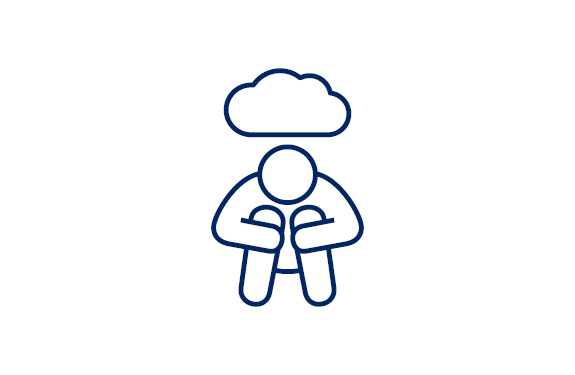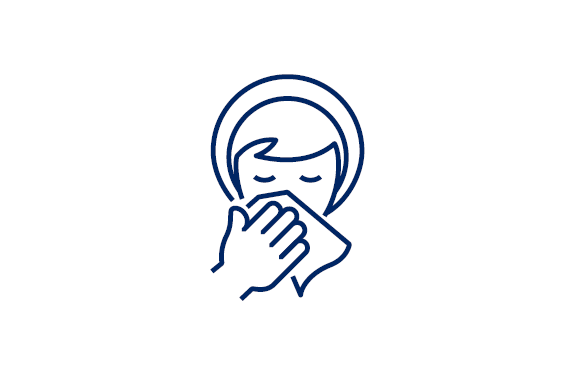Climate change can affect health and wellbeing in many ways. For example, exposure to higher temperatures can cause heat stroke or heat exhaustion. More frequent floods and bushfires may cause more injury and death.
However, climate change may also affect health and wellbeing in less direct ways.
- Lung and heart health can be affected by air pollution events.
- Anxiety and depression may increase in communities where extreme weather displaces people from their homes and impacts their livelihoods.
- Food- and water-borne disease may increase with rising temperatures.
- Mosquito-borne disease may spread more easily under warmer and wetter weather conditions.
- Poor nutrition can result from a decrease in the supply and affordability of healthy food due to extreme weather.
- Allergies may worsen due to changes to pollen seasons and conditions that promote mould growth.
On this page
-
Heat-related illnesses
-
Accidental injury
-
Lung and heart health
-
Mental heath and emotional wellbeing
-
Food- and water-borne diseases
-
Mosquito-borne diseases
-
Poor nutrition
-
Allergies
Heat-related illnesses
 Extreme heat and long periods of hot weather (heatwaves) affect our health. During hot weather the risk of dehydration and overheating increases. In the most severe cases this may lead to life-threatening illness such as heat stroke and heat exhaustion. Hotter nights can disturb sleep and make it harder to recover from the heat of previous hot days.
Extreme heat and long periods of hot weather (heatwaves) affect our health. During hot weather the risk of dehydration and overheating increases. In the most severe cases this may lead to life-threatening illness such as heat stroke and heat exhaustion. Hotter nights can disturb sleep and make it harder to recover from the heat of previous hot days.
More information is available at
Heat is a health risk - beat the heat.
Accidental injury
 The number and severity of bushfires, floods and storms are increasing due to climate change. There are direct risks of injury and death from fire, falling and windblown debris and drowning. The risk of injury from unstable and slippery surfaces, damaged buildings, sharp objects and chemical spills may remain after the event.
The number and severity of bushfires, floods and storms are increasing due to climate change. There are direct risks of injury and death from fire, falling and windblown debris and drowning. The risk of injury from unstable and slippery surfaces, damaged buildings, sharp objects and chemical spills may remain after the event.
More information is available at
Natural disasters and emergency incidents.
Lung and heart health
 Climate change is likely to increase the number of air pollution events. Bushfire smoke, major dust storms during drought, and a build-up of ground-level ozone on hot days can all worsen lung and heart conditions. Breathing in large amounts of smoke and dust can lead to an asthma attack, a heart attack or stroke.
Climate change is likely to increase the number of air pollution events. Bushfire smoke, major dust storms during drought, and a build-up of ground-level ozone on hot days can all worsen lung and heart conditions. Breathing in large amounts of smoke and dust can lead to an asthma attack, a heart attack or stroke.
More information is available at
Air quality.
Mental health and emotional wellbeing
 Catastrophic events such as bushfires, storms, floods and droughts can disrupt communities and cause emotional and mental trauma for individuals.
Catastrophic events such as bushfires, storms, floods and droughts can disrupt communities and cause emotional and mental trauma for individuals.
The death of friends and family, injury, displacement from home and the loss of community can cause anxiety, depression and post-traumatic stress disorders.
Droughts can be particularly impactful on farming communities where the loss of livelihood and uncertainty about the future can impact mental health. Feelings of loss and grief can follow seeing the destruction of local environments and habitat. Aboriginal people, who have a close connection to place and country, may be greatly impacted by these events.
Information on where to find help and support is available at
Mental health impacts.
Food- and water-borne diseases
 Some pathogens such as bacteria and viruses can multiply during warmer weather. This can increase the risk of food spoilage and food-borne diseases. More frequent heatwaves, storms and floods may also disrupt power supplies and transport which can affect refrigeration and the distribution of food.
Some pathogens such as bacteria and viruses can multiply during warmer weather. This can increase the risk of food spoilage and food-borne diseases. More frequent heatwaves, storms and floods may also disrupt power supplies and transport which can affect refrigeration and the distribution of food.
Severe storms and rainfall can lead to erosion and flooding. This can increase suspended soil particles in drinking water catchments and make it more challenging to remove pathogens in drinking water. Rain following bushfires can also make water treatment difficult.
Warmer conditions can also promote blooms of toxic cyanobacteria (blue-green algae) that can cause skin irritation, mild respiratory effects and gastrointestinal infection for recreational water users.
More information is available at
Recreational water quality and Staying safe and healthy during extended power outages.
Mosquito-borne diseases
 Some mosquitoes can transmit viruses to humans that cause illness. Mosquitoes require water to breed and are more active in warmer weather. Climate change may increase the number of locations where specific mosquito-borne viruses are found. This may not only increase the risk of mosquito-borne diseases already present in NSW but also allow the introduction of mosquito-borne diseases into NSW.
Some mosquitoes can transmit viruses to humans that cause illness. Mosquitoes require water to breed and are more active in warmer weather. Climate change may increase the number of locations where specific mosquito-borne viruses are found. This may not only increase the risk of mosquito-borne diseases already present in NSW but also allow the introduction of mosquito-borne diseases into NSW.
More information on mosquito-borne diseases and how to avoid mosquito bites is available at
Vector-borne diseases.
Poor nutrition
 Extreme weather events can affect agricultural production and food supply chains. This can limit the supply of healthy fresh fruit and vegetables and make these foods less affordable.
Extreme weather events can affect agricultural production and food supply chains. This can limit the supply of healthy fresh fruit and vegetables and make these foods less affordable.
Eating less nutritious foods can increase the risk of chronic diseases such as obesity, heart disease and diabetes.
Information about making healthy food choices is available at
Healthy Eating Active Living website.
Allergies
 Warmer temperatures and increased carbon dioxide in the atmosphere may increase pollen levels. This can impact people with pollen allergies who experience hay fever (also known as allergic rhinitis) during certain times of the year.
Warmer temperatures and increased carbon dioxide in the atmosphere may increase pollen levels. This can impact people with pollen allergies who experience hay fever (also known as allergic rhinitis) during certain times of the year.
Increases in heavy rainfall and floods may increase the growth of mould in damp, indoor areas. People with asthma, allergies or other sensitivities may be impacted by exposure to mould.
More information is available in our
Mould fact sheet.
